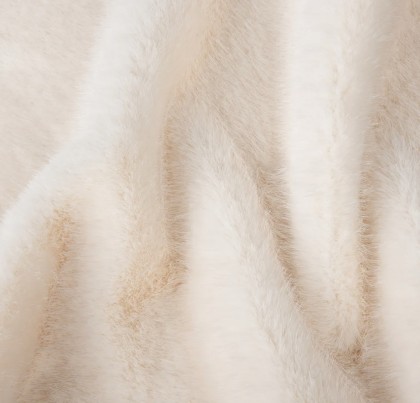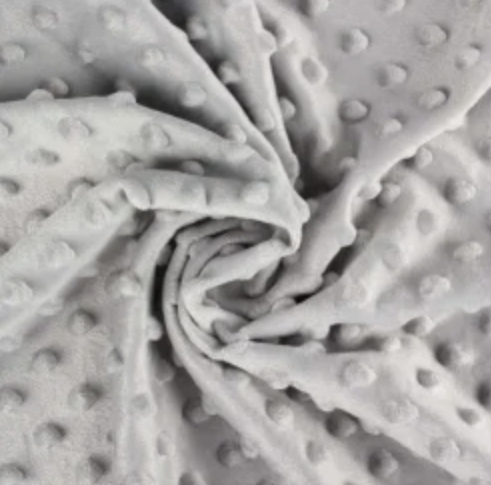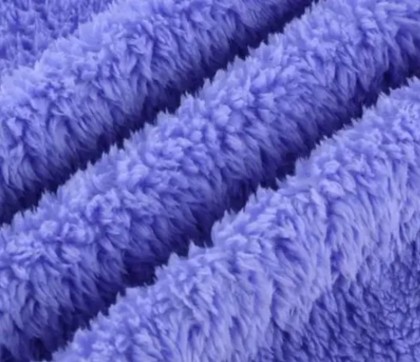Introducción
As the temperatures drop and cold weather sets in, finding the right fabric to keep warm becomes essential. Among the myriad options available, one fabric stands out for its combined qualities of warmth, softness, and durability: polar fleece. Often compared to its fluffy cousin, coral fleece, polar fleece is a synthetic fiber that has revolutionized the way we stay warm in winter. In this article, we will explore why polar fleece is the ideal choice for cold weather, how it compares to other fabrics, and its various applications.

What is Polar Fleece?
Polar fleece is a type of fabric that is made from polyester fibers, specifically designed to provide insulation and comfort. This fabric is characterized by its lightweight composition and soft texture, making it a popular choice for outdoor apparel, blankets, and a variety of winter gear. It is also easy to care for and quick to dry, which adds to its appeal during the cold months.
Unlike natural fibers like wool, polar fleece does not absorb moisture, allowing it to wick away sweat, thus keeping you dry and warm. Its structure creates tiny pockets of air that trap heat, further enhancing its thermal properties.
Why Choose Polar Fleece for Cold Weather?
1. Excellent Insulation
One of the primary reasons polar fleece is highly regarded for cold weather use is its exceptional insulation. The fabric retains heat effectively, making it perfect for layering garments. Whether you’re going for a hike, running errands, or simply lounging at home, polar fleece ensures you stay warm without needing heavy, bulky clothing.
2. Lightweight and Comfortable
While polar fleece provides remarkable insulation, it remains lightweight and easy to wear. Unlike other warm materials, it does not weigh you down, allowing freedom of movement. This is particularly important for outdoor enthusiasts who need to remain agile while battling the elements.
3. Breathability
People often overlook the importance of breathability in fabrics designed for cold weather. Polar fleece excels in this regard, allowing moisture and heat to escape, thereby preventing overheating. This feature is essential when engaging in physical activities, where body temperature can fluctuate rapidly.
Comparison: Polar Fleece vs. Coral Fleece
While we discuss polar fleece, it’s also worth noting its close relative, coral fleece. Both fabrics are made from polyester, but there are some critical differences.
- Texture: Vellón coral is known for its plush, ultra-soft texture, making it incredibly comfortable against the skin. While polar fleece is also soft, it has a different feel, often described as more rug-like.
- Insulation: Both fabrics provide good insulation, but polar fleece typically has a slightly better thermal performance due to its denser weave and ability to trap more air.
- Aplicaciones: Polar fleece is frequently used for jackets, running gear, and outdoor clothing, whereas coral fleece is often found in blankets, pajamas, and home textiles.
Applications of Polar Fleece
1. Outerwear
From jackets to coats, polar fleece is a popular choice for outdoor apparel. Many brands incorporate polar fleece into their winter collections to provide consumers with stylish yet functional options.
2. Home Textiles
Comfortable throws and blankets made from polar fleece are staples in many households during the colder months. They provide just the right amount of warmth for cozy nights in or for adding extra comfort to bedding.
3. Activewear
Polar fleece has gained recognition in the world of activewear, particularly for those involved in winter sports like skiing or snowboarding. Its moisture-wicking properties and breathability make it an ideal base layer under heavier insulation.
4. Children’s Clothing
Kids often need extra warmth during playtime outdoors. Polar fleece is soft enough for children’s sensitive skin and durable enough to withstand the wear and tear of active play.
Caring for Polar Fleece
Taking care of your polar fleece garments is essential to maximize their lifespan. Here are some practical tips:
1. Washing
Polar fleece can typically be machine washed in cold water. Avoid using fabric softeners, as they can create a film on the fabric that reduces breathability and moisture-wicking properties.
2. Drying
Air drying is ideal for polar fleece, but if you must use a dryer, choose a low heat setting. High heat can damage the fibers and cause the fabric to lose its shape.
3. Storing
When storing polar fleece items, keep them in a cool, dry place to prevent mildew and odors. Avoid folding items tightly, as this can create creases that are difficult to remove.




